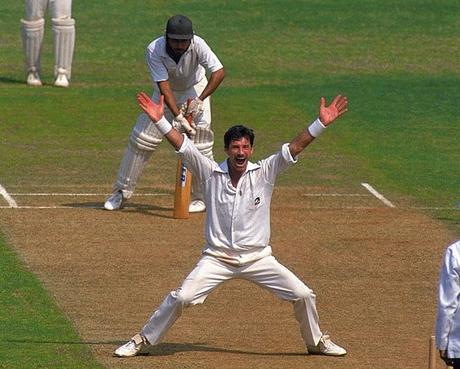Communication is an art ~ in olden days, people used to write letters – now rather than mere words, usage of graphics and symbols, can enhance expression of feelings such as happiness, anger, surprise, sadness and more. There are ‘emojis’ - the ideograms or smileys used in Japanese electronic messages and webpages, the use of which is spreading outside Japan. Emoticons on the other hand are generally a limited set of icons which, by definition, express an emotion of one kind or another.
 In
the Rajnikant starrer, Shankar directed blockbuster ‘Enthiran’ - Dr Vaseegaran,
a scientist working on alternative intelligence develops a humanoid robot which gets rejected by sinister designs. At one point of time, the robot ‘Chitti’ asks
why he has not been provided with ‘emotion’.
Dr Vaseegaran reprogrammes it with human feelings and emotions so that
it could distinguish between right and
wrong. However things go wrong when Chitti falls in love with Sana ( Aishwarya). Towards the climax, the robot replicates
itself multiple times and lengthy fight ensues.
‘Emotion’ – what ?
In psychology and
philosophy, emotion is a subjective, conscious
experience characterized primarily by psycho-physiological expressions,
biological reactions, and mental states. Emotion is often associated and
considered reciprocally influential with mood, temperament, personality,
disposition, and motivation. It
also is influenced by hormones and neurotransmitters. Emotion is often the
driving force behind motivation, positive or negative. The physiology of emotion is closely linked
to arousal of the nervous system with various states and strengths of arousal
relating, apparently, to particular emotions. Emotions are a complex state of
feeling that results in physical and psychological changes that influence our
behaviour. Yet emotion is more of a
feeling than any apt description in words.
In
the Rajnikant starrer, Shankar directed blockbuster ‘Enthiran’ - Dr Vaseegaran,
a scientist working on alternative intelligence develops a humanoid robot which gets rejected by sinister designs. At one point of time, the robot ‘Chitti’ asks
why he has not been provided with ‘emotion’.
Dr Vaseegaran reprogrammes it with human feelings and emotions so that
it could distinguish between right and
wrong. However things go wrong when Chitti falls in love with Sana ( Aishwarya). Towards the climax, the robot replicates
itself multiple times and lengthy fight ensues.
‘Emotion’ – what ?
In psychology and
philosophy, emotion is a subjective, conscious
experience characterized primarily by psycho-physiological expressions,
biological reactions, and mental states. Emotion is often associated and
considered reciprocally influential with mood, temperament, personality,
disposition, and motivation. It
also is influenced by hormones and neurotransmitters. Emotion is often the
driving force behind motivation, positive or negative. The physiology of emotion is closely linked
to arousal of the nervous system with various states and strengths of arousal
relating, apparently, to particular emotions. Emotions are a complex state of
feeling that results in physical and psychological changes that influence our
behaviour. Yet emotion is more of a
feeling than any apt description in words.
 Read that the word “emotion” did not
exist in the English language until the early 17th century. It made the hop
from France to Britain when British linguist John Florio translated philosopher
Michel de Montaigne’s essays. In
everyday life, the lack of a formalized definition of emotion may not matter so
much.
Paul Ekman, is an American psychologist who is a pioneer
in the study of emotions and their relation to facial expressions, has created
an 'atlas of emotions' with more than ten thousand facial expressions, and has
gained a reputation as "the best human lie detector in the world". He
was ranked 59th out of the 100 most cited psychologists of the twentieth
century. Ekman conducted seminal research on the specific biological correlates
of specific emotions, demonstrating the universality and discreteness of
emotions in a Darwinian approach. However, the more popularized belief during
the 1950s was that facial expressions and their meanings were culturally
determined through behavioural learning processes. This was the belief of some
anthropologists including Margaret Mead who had traveled to different
countries examining how cultures communicated using nonverbal behavior.
Through a series of
studies, Ekman found a high agreement across members of diverse Western and
Eastern literate cultures on selecting emotional labels that fit facial
expressions. Expressions he found to be universal included those indicating
anger, disgust, fear, happiness, sadness, and surprise. Findings on contempt
are less clear, though there is at least some preliminary evidence that this
emotion and its expression are universally recognized. Working with his long-time friend Wallace V.
Friesen, Ekman demonstrated that the findings extended to preliterate Fore
tribesmen in Papua New Guinea, whose members could not have learned the meaning
of expressions from exposure to media depictions of emotion. In the 1990s, Ekman proposed an expanded list
of basic emotions, including a range of positive and negative emotions that are
not all encoded in facial muscles. The newly included emotions were : Amusement,
Contempt, Contentment, Embarrassment, Excitement, Guilt, Pride in achievement,
Relief, Satisfaction, Sensory pleasure, and Shame.
Read that the word “emotion” did not
exist in the English language until the early 17th century. It made the hop
from France to Britain when British linguist John Florio translated philosopher
Michel de Montaigne’s essays. In
everyday life, the lack of a formalized definition of emotion may not matter so
much.
Paul Ekman, is an American psychologist who is a pioneer
in the study of emotions and their relation to facial expressions, has created
an 'atlas of emotions' with more than ten thousand facial expressions, and has
gained a reputation as "the best human lie detector in the world". He
was ranked 59th out of the 100 most cited psychologists of the twentieth
century. Ekman conducted seminal research on the specific biological correlates
of specific emotions, demonstrating the universality and discreteness of
emotions in a Darwinian approach. However, the more popularized belief during
the 1950s was that facial expressions and their meanings were culturally
determined through behavioural learning processes. This was the belief of some
anthropologists including Margaret Mead who had traveled to different
countries examining how cultures communicated using nonverbal behavior.
Through a series of
studies, Ekman found a high agreement across members of diverse Western and
Eastern literate cultures on selecting emotional labels that fit facial
expressions. Expressions he found to be universal included those indicating
anger, disgust, fear, happiness, sadness, and surprise. Findings on contempt
are less clear, though there is at least some preliminary evidence that this
emotion and its expression are universally recognized. Working with his long-time friend Wallace V.
Friesen, Ekman demonstrated that the findings extended to preliterate Fore
tribesmen in Papua New Guinea, whose members could not have learned the meaning
of expressions from exposure to media depictions of emotion. In the 1990s, Ekman proposed an expanded list
of basic emotions, including a range of positive and negative emotions that are
not all encoded in facial muscles. The newly included emotions were : Amusement,
Contempt, Contentment, Embarrassment, Excitement, Guilt, Pride in achievement,
Relief, Satisfaction, Sensory pleasure, and Shame.
 Richard Hadlee traps Arunlal and appeals ~ pic : cricinfo.com
Ekman's famous test
of emotion recognition was the Pictures of Facial Affect (POFA) stimulus set
published in 1976. Consisting of 110 black and white images of Caucasian actors
portraying the six universal emotions plus neutral expressions, the POFA has
been used to study emotion recognition rates in normal and psychiatric
populations around the world. Ekman used
these stimuli in his original cross-cultural research. Many researchers favour
the POFA because these photographs have been rated by large normative groups in
different cultures. There are of course
critics who do not fully subscribe to the views of Ekman.
The Expression of the Emotions in Man
and Animals is a book by Charles Darwin, published in 1872, concerning
genetically determined aspects of behavior. In this book, Darwin seeks to trace the animal
origins of human characteristics, such as the pursing of the lips in
concentration and the tightening of the muscles around the eyes in anger and
efforts of memory. The Expression of the Emotions is also an important landmark
in the history of book illustration.
With regards – S.
Sampathkumar
Richard Hadlee traps Arunlal and appeals ~ pic : cricinfo.com
Ekman's famous test
of emotion recognition was the Pictures of Facial Affect (POFA) stimulus set
published in 1976. Consisting of 110 black and white images of Caucasian actors
portraying the six universal emotions plus neutral expressions, the POFA has
been used to study emotion recognition rates in normal and psychiatric
populations around the world. Ekman used
these stimuli in his original cross-cultural research. Many researchers favour
the POFA because these photographs have been rated by large normative groups in
different cultures. There are of course
critics who do not fully subscribe to the views of Ekman.
The Expression of the Emotions in Man
and Animals is a book by Charles Darwin, published in 1872, concerning
genetically determined aspects of behavior. In this book, Darwin seeks to trace the animal
origins of human characteristics, such as the pursing of the lips in
concentration and the tightening of the muscles around the eyes in anger and
efforts of memory. The Expression of the Emotions is also an important landmark
in the history of book illustration.
With regards – S.
Sampathkumar
25th Feb 2015.

